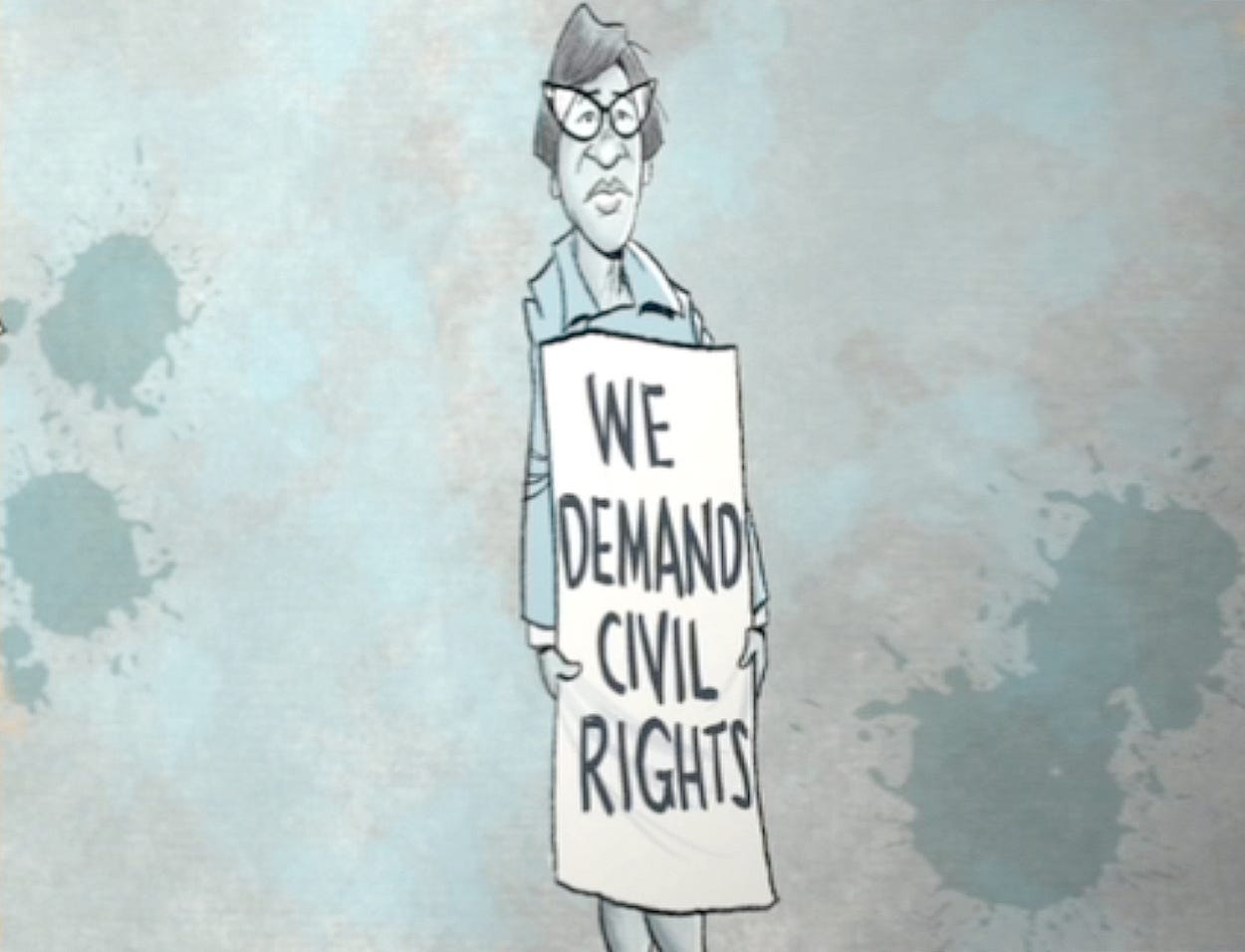Mike Thompson, Paste BN
Animated video explains the civil rights movement

As part of a Paste BN series on the civil rights movement in 1961, I created an animated opinion about the history of civil rights in the U.S. Published on 9/21/21
---------------------------------------
My heroes are now in their 70s and 80s. That may seem like a strange thing to say given our youth-obsessed culture, but a 10-day road trip last summer, during which I interviewed veterans of the fight for civil rights in 1961, convinced me that courage is the greatest superpower and that lessons learned 60 years ago can guide the fight against voting restrictions today.
Thousands of people fought back against the system of racial apartheid in 1961 and won. They did it not with bullets and violence, but with acts of civil disobedience, conviction and raw courage. Let me introduce you to five of them:
‘Still fighting that same fight’
David Williamson Jr. of Rock Hill, South Carolina, took a stand by sitting down at a segregated lunch counter. After being arrested, Williamson refused bail, forcing a segregated government to pay to keep him behind bars and feed him for almost a month. Williamson and the "Friendship Nine" provided a template for bringing about change through nonviolent civil disobedience, and others across the South soon followed this “jail, no bail” strategy. The resulting strain on public coffers forced an end to segregated lunch counters. Published 11/10/2021
---------------------------------------
‘You had to be real strong’: Black women who fought to end segregation
Phyllis Hyatt, a friend of Williamson’s and a fellow resident of Rock Hill, proved that there’s more than one way to fight back against racial discrimination, and that every action in opposition to injustice matters. Hyatt was one of Rock Hill’s “City Girls” who risked life and limb to protest segregation alongside their male counterparts. Published 11/10/2021
---------------------------------------
'My spiritual calling': A lifetime of fighting for social justice
Richard Gleason took a temporary leave from his job as a youth minister in public housing in Chicago to join the Freedom Riders in 1961. Gleason proves that faith can be a powerful motivator in the fight for social justice. Everyone has value and is deserving of liberties, and Gleason has devoted his life to that fact. Published 12/30/21
---------------------------------------
'Power was in the vote': Why it still matters today
Hezekiah Watkins of Jackson, Mississippi, has been a civil rights leader since he was a child. Mistaken for a Freedom Rider, the then-13-year-old was arrested and placed in a cell on death row with two condemned criminals. After a lifetime of leadership, Watkins, who by his own count has been arrested more than 100 times, now shares his story of hope as a guide at the Mississippi Civil Rights Museum. Published 12/30/21
---------------------------------------
'Passion is great but strategy is essential'
Dr. Tom Ellison of Birmingham, Alabama, embodies what a lifetime commitment to social justice looks like by not just talking the talk but walking the walk. Ellison has been in the thick of the fight for equality since childhood, inspired by his minister father who was a friend and colleague of such civil rights icons as Dr. Martin Luther King Jr. and Rev. Fred Shuttlesworth. Published 12/30/21
---------------------------------------
I did a number of other illustrated reporting pieces in 2021:
Vote like your rights depend on it
An examination at voter suppression efforts in Michigan and across the nation. The actions of civil rights veterans point the way forward in the fight against voting rights. Published 12/30/21
---------------------------------------
Sunshine laws
A look at the importance of Sunshine Laws and how they made a difference in one media outlet's coverage of the Breonna Taylor slaying. Published 3/16/21
---------------------------------------
Chauvin verdict
In April of last year, I drove to the Hennepin County Government Center in Minneapolis as was outside as the verdict in the trial of former Minneapolis police officer Derek Chauvin was announced. I used color illustration in my breaking news piece to express my opinions about the mood and emotions of my hometown before and after the verdict.
---------------------------------------
What happens when we stop talking?
Last November, I drove to the Kenosha Co. Courthouse in Kenosha, Wis. to create artwork of my impression of events surrounding the Kyle Rittenhouse verdict. Published 11/21/21
---------------------------------------